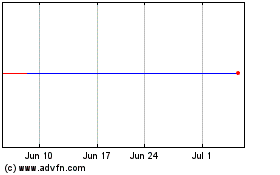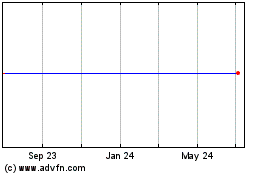First subhead should read: Study of
First-In-Class Therapy Met Primary Endpoint with 90 Percent of
Patients Showing Substantial Skeletal Healing at 24 Weeks (sted
...24 Months).
The corrected release reads:
NEW ENGLAND JOURNAL OF MEDICINE
PUBLISHES DATA FROM PHASE 2 STUDY OF ASFOTASE ALFA IN
LIFE-THREATENING HYPOPHOSPHATASIA
– Study of First-In-Class Therapy Met
Primary Endpoint with 90 Percent of Patients Showing Substantial
Skeletal Healing at 24 Weeks –
– Key Secondary Endpoints Including
Improvement in Cognitive Development and Motor and Pulmonary
Function Also Achieved –
Alexion Pharmaceuticals, Inc. (Nasdaq: ALXN) today announced
that asfotase alfa (formerly known as ENB-0040), a highly
innovative investigational targeted enzyme replacement therapy, was
shown to improve skeletal abnormalities, pulmonary and physical
function, and cognitive development in a Phase 2 study of infants
and young children with life-threatening hypophosphatasia (HPP).
Alexion is developing asfotase alfa as a potential treatment for
patients with HPP, an ultra-rare, genetic, life-threatening
metabolic disease for which there are currently no approved or
effective treatment options. Findings from the study are published
in the March 8th issue of the New England Journal of Medicine.
Due to a genetic enzyme deficiency, symptomatic patients with
HPP face progressive damage to multiple vital organs including
destruction and deformity of bones, profound muscle weakness,
seizures, impaired renal function, and respiratory failure.1,2,3,4
About half of newborns with HPP do not survive past one year of
age.1
“This inborn error of metabolism can cause progressive skeletal
deterioration and muscle weakness in severely affected infants and
very young children with HPP, leading to respiratory insufficiency
and significant mortality,” said lead study author Michael P.
Whyte, M.D., Medical-Scientific Director, Center for Metabolic Bone
Disease and Molecular Research, Shriners Hospitals for Children,
St. Louis. “In this study of patients with severe perinatal and
infantile forms of HPP, we saw in nearly all patients striking
skeletal healing that included improved bone formation and reduced
deformity, as well as improved pulmonary function and motor
development. These findings are remarkable given the historically
grim outlook for patients with life-threatening HPP.”
About the Study
The multinational, open-label Phase 2 study of asfotase alfa
enrolled 11 patients with HPP ages 3 years or younger whose
symptoms began before the age of 6 months. Patients in the study
received asfotase alfa for six months and then had the opportunity
to enroll in an open-label extension study.
The primary efficacy endpoint was change in the skeletal
manifestations of HPP, as assessed by radiography. Response to
treatment was defined as a mean improvement of two or more points,
as rated by a panel of three independent radiologists, on a
seven-point scale known as the radiographic global impression of
change (RGI-C). Skeletal changes were also assessed using a
10-point scale that measured skeletal abnormalities at the wrists
and knees. Additional efficacy assessments included evaluations of
respiratory status, gross motor function, and cognitive development
(Bayley-III scale).
Ten patients completed the six-month study and nine patients are
currently participating in the extension study. All patients
treated with asfotase alfa demonstrated an improvement in two key
biochemical indicators of HPP: blood levels of PPi (inorganic
pyrophosphate) and PLP (pyridoxal 5’ phosphate). For the primary
efficacy endpoint, nine of 10 patients (90%) met the criterion for
treatment response by week 24, and eight of nine (89%) achieved
treatment response by week 48. Skeletal healing became apparent as
early as week 3.
Respiratory function improved in all patients. These
improvements were evident as early as week 12. Compared to the 10
of 11 patients who required respiratory support at baseline, at
week 48 only three of nine patients required any respiratory
support and only one patient remained on full mechanical
ventilation. In addition to the improvements in bone mineralization
and respiratory function, there were improvements in fine motor,
gross motor and cognitive development, as assessed by the
Bayley-III instrument, for seven of the eight patients who were
evaluated. Whereas at baseline, no patients were able to bear
weight through their legs owing to skeletal abnormalities and
muscle weakness, at 48 weeks of treatment, seven of nine patients
were able to bear weight through their legs.
The most common treatment-related adverse event observed in the
study was mild injection-site reaction. Severe adverse events
observed in the study were generally consistent with the symptoms
expected of patients with severe HPP, including infection,
respiratory disorders, and nervous-system complications. One
patient died, and this was determined to not be related to study
drug.
“We are thrilled that asfotase alfa has shown significant
improvement in the skeletal, respiratory, and developmental
symptoms of HPP,” said Deborah Sittig, Founder of Soft Bones, the
U.S. Hypophosphatasia Foundation. “HPP can be a very challenging
disease for families to manage, especially in the absence of a safe
and effective treatment. Today, with these compelling study
results, we have the first real promise of a treatment for
HPP.”
Patients continue to be evaluated in the extension study, with
mean treatment duration of 18 months and some patients treated for
more than three years. Asfotase alfa has also been studied in a
Phase 2 study in juvenile patients (ages 5 to 12) with HPP and is
currently being evaluated in additional studies in pediatric and
adult patients with HPP.
“These published findings from the Phase 2 investigational study
in infants and young children provide strong support for the
potential of asfotase alfa to correct the underlying enzyme
deficiency in patients with HPP, with a positive impact on the
severe and life-threatening metabolic complications of the
disease,” said Leonard Bell, M.D., Chief Executive Officer of
Alexion. “We are continuing to drive the development of asfotase
alfa in infants, children, and adults with HPP with the objective
of bringing the first approved treatment to patients and families
with this disease.”
About Hypophosphatasia (HPP)
HPP is an ultra-rare, genetic, and life-threatening metabolic
disease characterized by defective bone mineralization and impaired
phosphate and calcium regulation that can lead to progressive
damage to multiple vital organs including destruction and deformity
of bones, profound muscle weakness, seizures, impaired renal
function, and respiratory failure.1,2,3,4 The genetic deficiency in
HPP can affect people of all ages with a wide-ranging severity, and
approximately 50 percent of infants with severe disease do not
survive past one year of age.1
HPP is caused by a genetic deficiency of an enzyme known as
tissue non-specific alkaline phosphatase (TNSALP), which causes
life-long abnormalities in metabolism of two minerals, calcium and
phosphate, leading directly to the debilitating morbidities and
premature mortality of the disease.1 There are currently no
therapies approved for HPP.1
About Asfotase Alfa
Asfotase alfa is an investigational, highly innovative,
first-in-class targeted enzyme replacement therapy designed to
address the underlying cause of HPP by targeting replacement of the
missing enzyme to the necessary body tissues. Asfotase alfa is
designed to normalize the genetically defective metabolic process
and prevent or reverse the severe and life-threatening
complications of life-long dysregulated mineral metabolism in
patients with HPP.
About Alexion
Alexion Pharmaceuticals, Inc. is a biopharmaceutical company
focused on serving patients with severe and ultra-rare disorders
through the innovation, development and commercialization of
life-transforming therapeutic products. Alexion is the global
leader in complement inhibition, and has developed and markets
Soliris® (eculizumab) as a treatment for patients with paroxysmal
nocturnal hemoglobinuria (PNH) and atypical hemolytic uremic
syndrome (aHUS), two debilitating, ultra-rare and life-threatening
disorders caused by chronic uncontrolled complement activation.
Soliris is currently approved in more than 35 countries for the
treatment of PNH, and in the United States and the European Union
for the treatment of aHUS. Alexion is evaluating other potential
indications for Soliris and is developing four other highly
innovative biotechnology product candidates, including asfotase
alfa. This press release and further information about Alexion
Pharmaceuticals, Inc. can be found at: www.alexionpharma.com.
[ALXN-G]
Safe Harbor Statement
This news release contains forward-looking statements, including
statements related to potential medical benefits of asfotase alfa
for hypophosphatasia (HPP). Forward-looking statements are subject
to factors that may cause Alexion's results and plans to differ
from those expected, including for example, decisions of regulatory
authorities regarding marketing approval or material limitations on
the marketing of asfotase alfa for HPP, delays in arranging
satisfactory manufacturing capabilities and establishing commercial
infrastructure for asfotase alfa for HPP, the possibility that
results of clinical trials are not predictive of safety and
efficacy results of asfotase alfa in broader or different patient
populations, the risk that third party payors (including
governmental agencies) will not reimburse for the use of asfotase
alfa (if approved) at acceptable rates or at all, the risk that
estimates regarding the number of patients with asfotase alfa and
observations regarding the natural history of patients with
asfotase alfa are inaccurate, and a variety of other risks set
forth from time to time in Alexion's filings with the Securities
and Exchange Commission, including but not limited to the risks
discussed in Alexion's Annual Report on Form 10-K for the year
ended December 31, 2011 and in our other filings with the
Securities and Exchange Commission. Alexion does not intend to
update any of these forward-looking statements to reflect events or
circumstances after the date hereof, except when a duty arises
under law.
References
1. Whyte MP. Hypophosphatasia. In: Glorieux FH, Jueppner H,
Pettifor J, eds. Pediatric bone: biology and diseases. 3rd ed. San
Diego, CA: Academic Press, 2012: 771-94.
2. Seshia SS, Derbyshire G, Haworth JC, Hoogstraten J. Myopathy
with Hypophosphatasia. Arch Dis Child. 1990. 65(1):130-1.
3. Whyte MP. Hypophosphatasia: Nature's Window on Alkaline
Phosphatase Function in Humans, in Principles of Bone Biology, 3rd
Ed. Part II: Molecular Mechanisms of Metabolic Bone Disease,
Chapter 73: 1573-1598. Academic Press. 2008.
4. Silver MM, Vilos GA, Milne KJ. Pulmonary Hypoplasia in
Neonatal Hypophosphatasia. Pediatr Pathol. 1998. 8:483-493.
Alexion Pharmaceuticals (NASDAQ:ALXN)
Historical Stock Chart
From May 2024 to Jun 2024

Alexion Pharmaceuticals (NASDAQ:ALXN)
Historical Stock Chart
From Jun 2023 to Jun 2024
